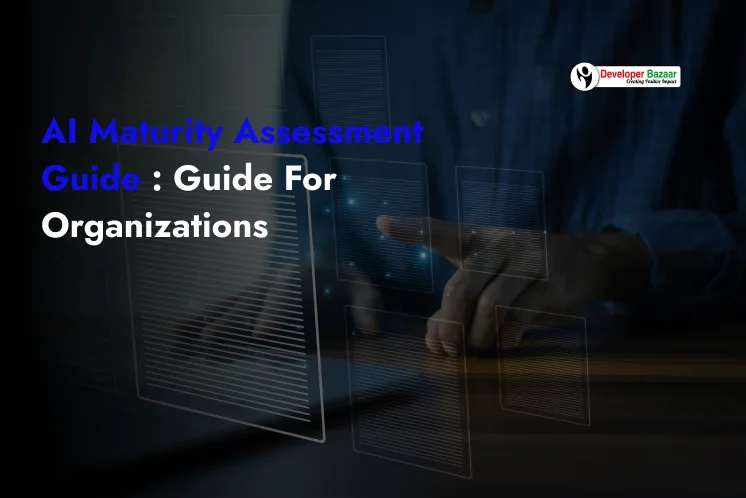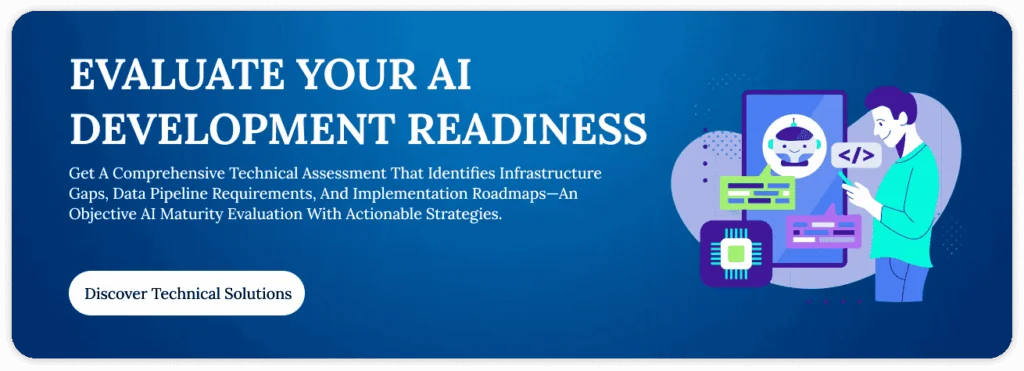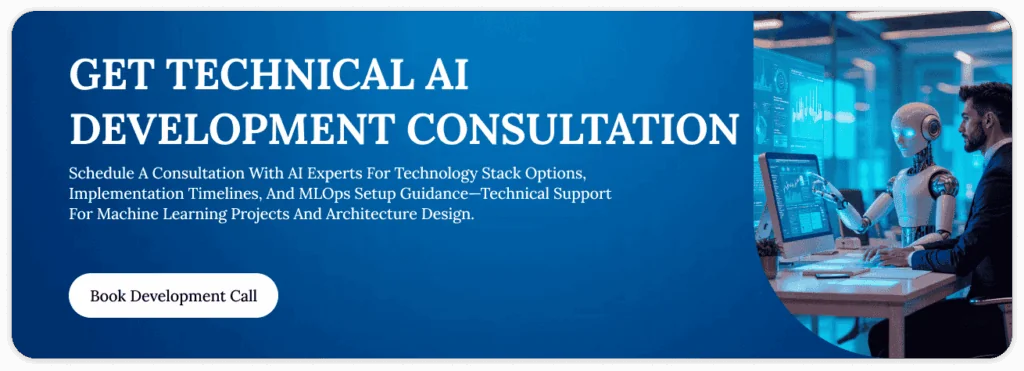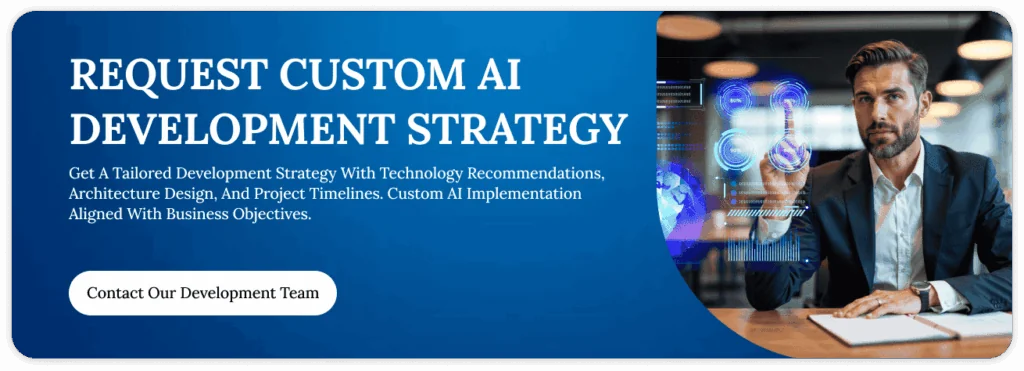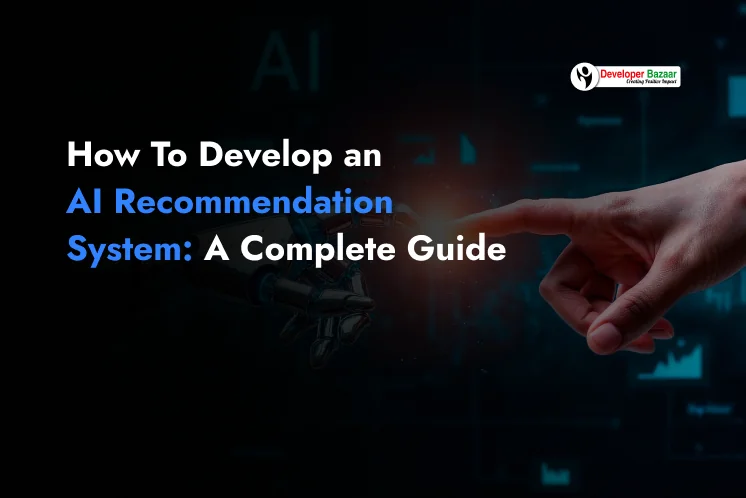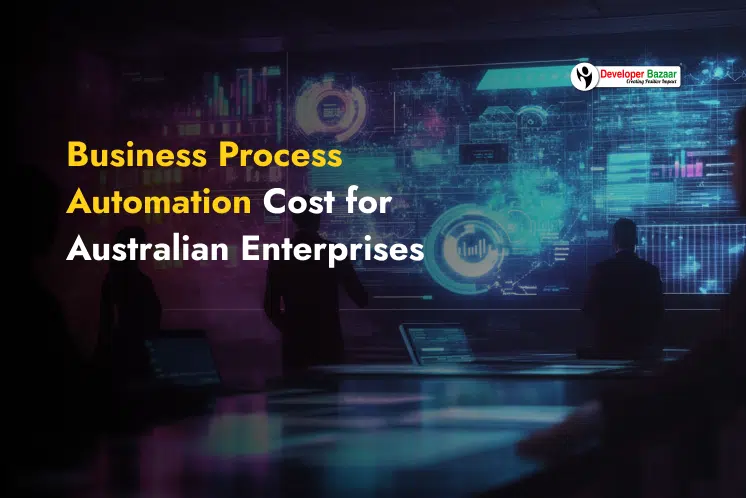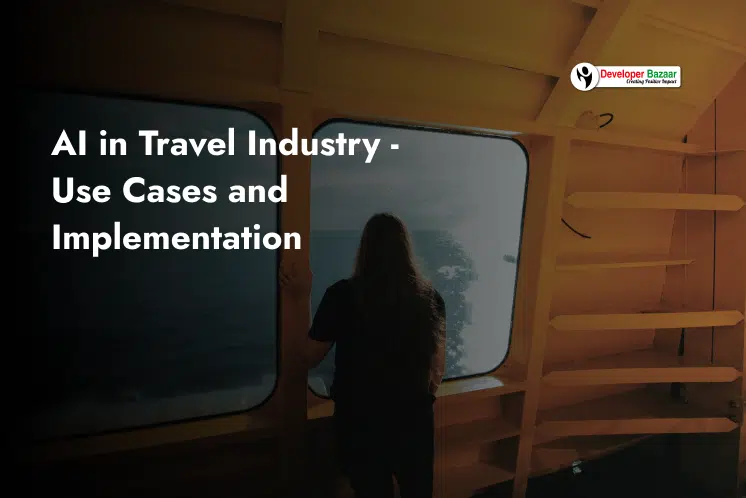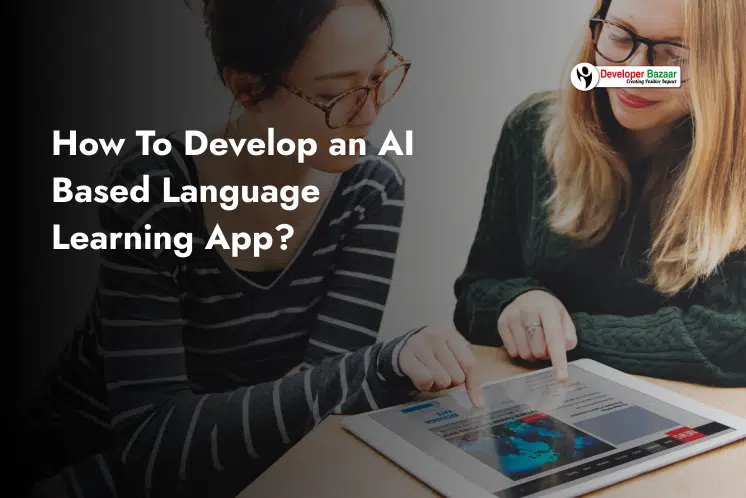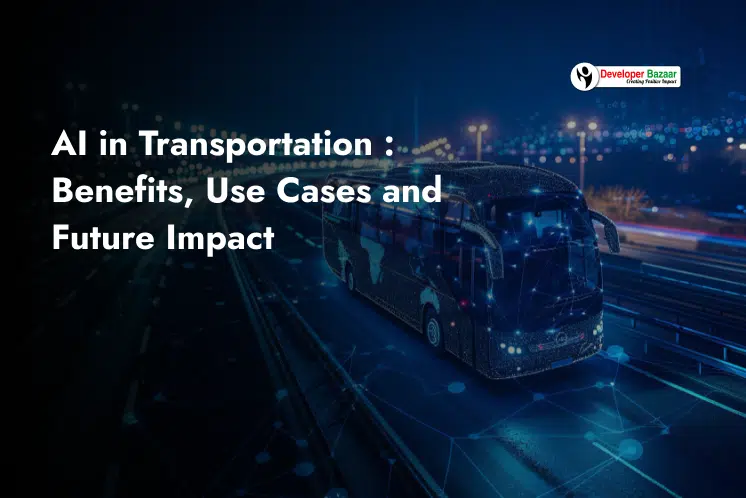Table of Contents
ToggleAI project failures hit 80% in 2024, yet organizations continue rushing into AI development without proper readiness evaluation. 42% of businesses are now scrapping most of their AI initiatives, up from just 17% last year. The difference between success and failure isn’t budget or technology—it’s strategic AI maturity assessment combined with proven development expertise.
What Will You Learn?
- Technical assessment frameworks that actually work
- Development strategies for organizational maturity levels
- Our implementation methodology that prevents costly rebuilds
- Tools and technologies for AI readiness evaluation
- Advanced strategies for building scalable AI solutions
We’ve helped 50+ organizations avoid the $62 million mistake IBM made with Watson for Oncology by conducting thorough AI maturity assessment for organizations before writing a single line of code. Our development-first approach ensures your AI investment delivers measurable ROI, not expensive lessons.
Understanding AI Maturity from a Development Perspective
What AI Maturity Means for Development Teams
AI maturity assessment for organizations isn’t about theoretical frameworks—it’s about technical readiness to build, deploy, and scale AI solutions successfully. Only 1% of companies have reached true AI maturity, despite 92% planning increased AI investments. This gap exists because most organizations focus on AI strategy while ignoring fundamental development prerequisites.
From a development perspective, AI maturity measures your organization’s capability to support the complete AI development lifecycle, data architecture quality, cloud infrastructure readiness, API integration capacity, and security framework robustness. These technical foundations determine whether your AI project becomes a $2.8 million success story or joins the 80% failure statistics.
Key Technical Components We Evaluate
Our AI maturity assessment for businesses examines three critical technical dimensions that directly impact development success:
- Data Architecture Readiness: Can your data pipelines support real-time AI model training and inference? 34% of organizations cite "lack of data" as their primary AI barrier—but they really mean lack of AI-ready data architecture.
- Infrastructure Scalability: Does your cloud environment support containerized AI workflows, automated MLOps pipelines, and edge deployment requirements? Infrastructure gaps cause 43% of AI project failures, according to recent CDO surveys.
- API Integration Capabilities: Modern AI solutions require seamless integration with existing enterprise systems through well-designed APIs. Poor integration planning leads to isolated AI tools that deliver minimal business value.
Why Technical Assessment Drives AI Development Success?
Development ROI and Technical Debt Prevention
Organizations conducting comprehensive AI maturity assessment for organizations before development achieve 3.5x higher success rates than those rushing into implementation. The financial impact is staggering: properly assessed projects average a $4.20 return per assessment dollar invested, while unprepared implementations struggle to break even.
Technical debt from rushed AI development services compounds exponentially. Watson for Oncology’s $62 million failure demonstrates how skipping foundational assessment leads to “unsafe and incorrect” AI outputs requiring complete rebuilds. Our development approach prevents these costly mistakes by identifying architectural gaps before coding begins.
Technology Stack Readiness and Future Scaling
MIT’s CISR Enterprise AI Maturity Model identifies four distinct maturity stages, with most organizations stuck in Stage 2 (pilot projects) unable to reach Stage 3 (systematic implementation) due to infrastructure limitations. Our technical assessment evaluates your current technology stack’s capacity to support enterprise-scale AI deployment.
Successful AI strategy implementation requires modern cloud-native architectures, automated monitoring systems, and integrated data pipelines specifically designed for AI workloads. Gartner’s AI Maturity Model emphasizes that organizational AI readiness spans seven key areas: strategy, product, governance, engineering, data, operating models, and culture—with engineering and data forming the technical foundation.
AI Maturity Assessment Approaches Can be Used
Multiple frameworks exist for AI maturity assessment, but successful evaluation requires combining technical infrastructure analysis with application-specific considerations and end-to-end development readiness. The key is choosing assessment approaches that address both immediate technical capabilities and long-term scalability requirements.
With 74% of companies struggling to achieve and scale value from AI despite significant investments, a comprehensive assessment becomes critical for identifying the root causes of implementation challenges before they derail entire AI initiatives.
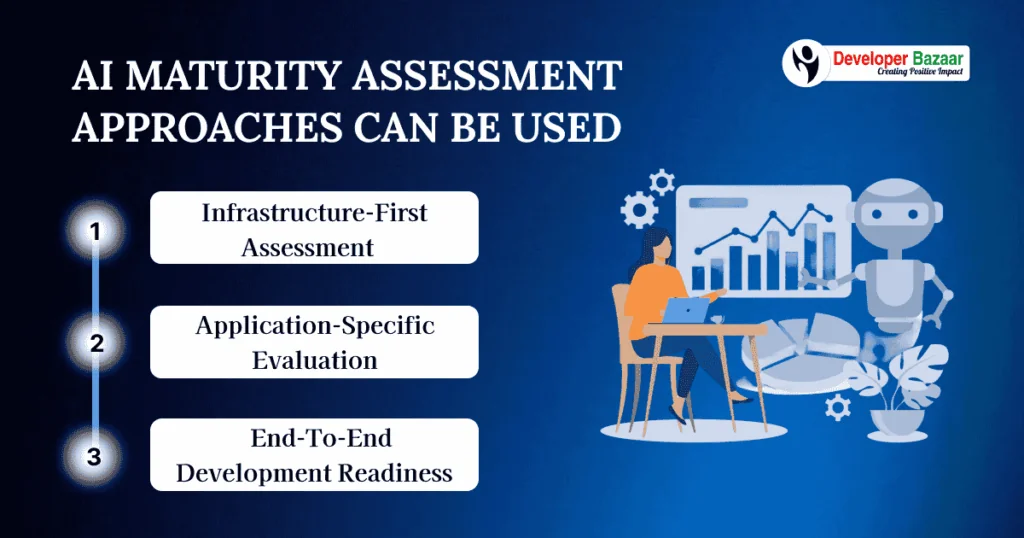
Infrastructure-First Assessment
Our technical evaluation begins with comprehensive infrastructure analysis using OWASP’s AI Maturity Assessment (AIMA) framework, which spans five core domains: Strategy, Design, Implementation, Operations, and Governance. We focus heavily on Implementation and Operations—the technical domains where most AI projects fail.
- Cloud Readiness Evaluation: We assess your current cloud architecture's capacity for containerized AI workloads, automated scaling, and multi-region deployment. This includes evaluating container orchestration capabilities, serverless computing readiness, and edge computing infrastructure for real-time AI applications.
- Data Pipeline Assessment: Modern AI requires streaming data architectures, not traditional batch processing. We evaluate your data engineering capabilities, real-time processing infrastructure, and data quality management systems that form the foundation of successful AI development.
Application-Specific Evaluation
Unlike generic maturity models, our assessment methodology adapts to your specific AI use case requirements. MITRE’s AI Maturity Model provides 20-dimensional assessments across six pillars, but we customize evaluation criteria based on whether you’re building predictive analytics, computer vision systems, natural language processing applications, or autonomous decision-making platforms.
AI applications introduce unique security challenges including adversarial attacks, data poisoning, and model extraction threats. Our assessment evaluates your current cybersecurity infrastructure’s readiness for AI-specific vulnerabilities and compliance requirements.
End-to-End Development Readiness
Technical Assessment and Development Process
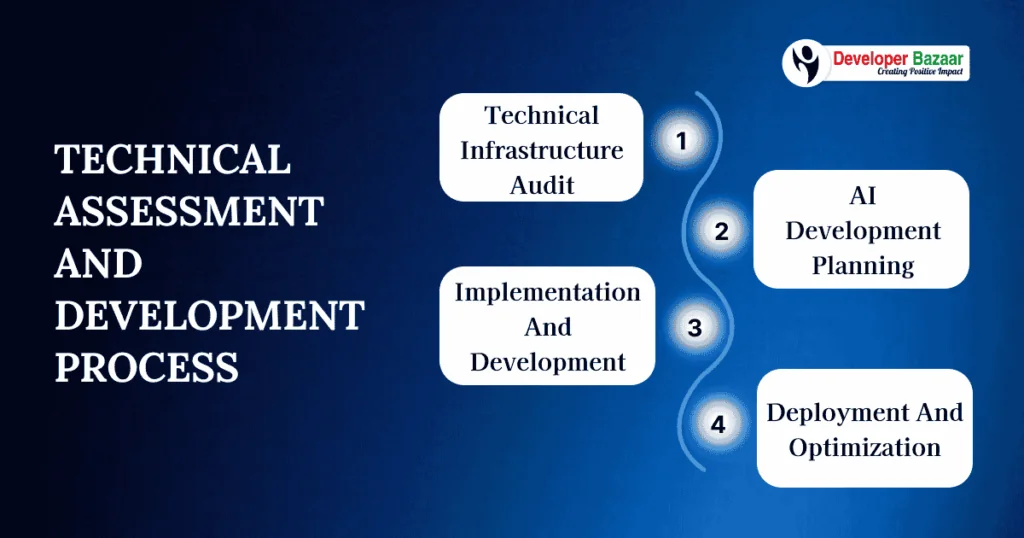
Phase 1: Technical Infrastructure Audit (2-3 weeks)
We begin with comprehensive evaluation of your current technology stack, data architecture, and development capabilities using proven AI maturity assessment for organizations methodologies. Our technical audit examines cloud infrastructure readiness, data pipeline maturity, API integration capabilities, and security framework robustness to determine your organization’s AI development readiness.
Only 21% of organizations have the necessary GPUs to meet current and future AI demands. In comparison, 43% of AI failures stem from data quality issues, making this comprehensive assessment critical for AI development success.
Phase 2: AI Development Planning (3-4 weeks)
Based on infrastructure audit findings, we create custom development roadmaps that align technical capabilities with business objectives for AI maturity assessment for organizations. This phase involves detailed architecture design, technology stack selection, and development methodology planning tailored to your organizational AI readiness level.
We design scalable systems using modern frameworks like TensorFlow and PyTorch, ensuring systematic progression from assessment to implementation while addressing the five primary root causes of AI project failure identified by RAND Corporation.
Phase 3: Implementation and Development (8-16 weeks)
Our development teams build AI solutions using assessment insights and proven methodologies from AI maturity assessment for organizations. We implement robust MLOps practices, automated testing frameworks, and comprehensive monitoring systems that ensure production-ready AI applications. This systematic approach addresses the critical gap where only 48% of AI projects make it into production, utilizing Infrastructure-as-Code implementation that enables 50% faster scaling during high-demand periods.
Phase 4: Deployment and Optimization (2-4 weeks)
We execute systematic deployment with comprehensive monitoring, performance tuning, and user training to ensure sustainable adoption and measurable business impact from AI maturity assessment for organizations. Our deployment strategy includes rollback procedures, performance monitoring, and continuous optimization capabilities using blue-green deployment strategies that minimize risk while ensuring smooth transition to production environments.
Blue-green deployment enables zero downtime during updates and provides rapid rollback capabilities, while our comprehensive monitoring and alerting systems enable proactive issue detection and automated model retraining for long-term AI development success.
Development Best Practices and Technical Pitfalls
The difference between AI project success and failure often comes from development methodology rather than algorithmic sophistication. While RAND Corporation research confirms that more than 80% of AI projects fail—twice the rate of traditional IT projects—successful organizations consistently apply proven development practices that address the root causes of failure.
The challenge isn’t building AI models; it’s building integrated, production-ready AI systems that can operate reliably at scale. Our experience across 50+ AI implementations reveals that systematic development practices and proactive pitfall avoidance are the primary differentiators between organizations that achieve sustainable AI value and those that join the failure statistics.
Technical Best Practices from 50+ AI Projects
Our experience building AI solutions across diverse industries has identified proven development strategies that consistently deliver successful outcomes through AI maturity assessment for organizations. These practices address the root causes of the 80% AI project failure rate while ensuring scalable, maintainable AI solutions.
Infrastructure-as-Code implementation enables 50% faster scaling during high-demand periods and eliminates environment-specific issues that cause 20% of AI project failures. We implement comprehensive MLOps workflows including automated model training, validation, deployment, and monitoring, microservices architecture for independent scaling, and multi-layered testing approaches that address both traditional software testing and AI-specific concerns like model bias, fairness, and explainability.
Common Technical Mistakes We Help Avoid
RAND Corporation’s research identifies five primary root causes of AI project failure: unclear project purpose, inadequate data, technology-first approaches, insufficient infrastructure, and inappropriate problem selection. Our development methodology specifically addresses each of these failure modes through AI maturity assessment for organizations.
Many organizations attempt to build comprehensive AI platforms as single monolithic applications, leading to scalability issues, while Deloitte’s 2024 survey shows 80% of AI and ML projects encounter difficulties related to data quality and governance. Our microservices approach enables independent development and scaling. At the same time, robust data engineering solutions ensure consistent, high-quality data flows that support real-time AI requirements and comprehensive observability for tracking model performance, data drift, and business impact metrics.
AI Development Tools and Technologies We Use
The AI development landscape demands strategic tool selection that balances cutting-edge capabilities with production reliability. Our technology stack reflects years of real-world experience across diverse AI implementations, prioritizing frameworks and platforms that consistently deliver scalable results.
With over 70% of AI research implementations now using PyTorch and AWS maintaining a 32% market share in cloud infrastructure, we combine industry-leading tools with specialized AI development platforms to ensure innovation and operational excellence. Our multi-cloud approach leverages the strengths of each platform while maintaining flexibility for evolving requirements and organizational preferences.
Assessment and Development Tools
Our technical toolkit combines industry-leading platforms with specialized AI development tools to deliver comprehensive solutions through AI maturity assessment for organizations. We leverage cloud-native architectures while maintaining flexibility for hybrid and on-premises deployments based on organizational requirements. Primary development using TensorFlow and PyTorch for model development, with over 70% of AI research implementations now using PyTorch and container orchestration using Kubernetes for scalable deployment.
Our multi-cloud expertise spans AWS SageMaker, Google Cloud AI Platform, and Microsoft Azure Machine Learning, with AWS SageMaker leading at 21% inclusion in cloud AI case studies. We utilize Apache Airflow for workflow orchestration and Apache Kafka for real-time data streaming, and comprehensive monitoring using Prometheus and Grafana for infrastructure metrics, plus specialized AI monitoring tools like Evidently AI for model drift detection.
Advanced Implementation Techniques
Our advanced implementation techniques support AI maturity assessment for organizations through Kubernetes-based deployment strategies that enable automatic scaling, rolling updates, and efficient resource utilization. We implement end-to-end MLOps automation, including automated data validation, model training, testing, deployment, and monitoring, with pipelines supporting both batch and real-time inference with automatic rollback capabilities.
Our containerization approach includes custom operators for AI-specific workloads and integration with service mesh architectures, while specialized edge AI deployment strategies enable real-time capabilities with reduced latency and improved data privacy.
RESTful and GraphQL APIs designed for high-performance AI inference ensure seamless integration with existing enterprise systems while maintaining security and scalability for comprehensive AI development lifecycle management.
Conclusion
The AI development landscape has matured significantly, yet only 21% of organizations have reached systematic AI implementation due to inadequate technical foundations. Success requires infrastructure modernization, data pipeline automation, MLOps implementation, and security framework enhancement—all built on comprehensive assessment and strategic planning.
Our proven development methodology transforms organizational AI readiness into a competitive advantage through end-to-end support from initial assessment to production deployment. The window for AI competitive advantage continues narrowing, but strategic technical excellence ensures your AI investment delivers measurable business value.
FAQs
Q1. What is the best way to get started with AI maturity assessment?
Begin with infrastructure evaluation and data architecture review. Our technical assessment identifies gaps and provides actionable development roadmap.
Q2. How long does AI maturity assessment and implementation take?
Assessment takes 2-4 weeks, development 8-16 weeks depending on complexity. We provide detailed timelines based on your specific requirements.
Q3. What are the main technical challenges with AI implementation?
Data quality issues (43% of failures), inadequate infrastructure (40%), and poor MLOps practices. Our assessment addresses these systematically.
Q4. Do I need specialized AI infrastructure for development?
Modern cloud platforms provide excellent AI capabilities. We assess your current infrastructure and recommend optimal deployment strategies.
Q5. What tools are essential for AI maturity assessment?
Infrastructure monitoring tools, data quality assessment platforms, and MLOps frameworks. We provide comprehensive tool recommendations based on needs.
Q6. How do I measure AI development success and ROI?
Technical metrics (model performance, system reliability) combined with business impact measures (efficiency gains, cost reduction, revenue impact).
Q7. What budget should I allocate for AI maturity assessment?
Assessment represents 3-7% of total AI development costs but reduces project risks by 67%. ROI typically realized within 8-15 months.
Q8. When should I seek professional AI development help?
When internal technical expertise is limited or project complexity exceeds current capabilities. We provide both assessment and implementation support.

Arpit Vaishnav
CTO
Developer Bazaar technologies
